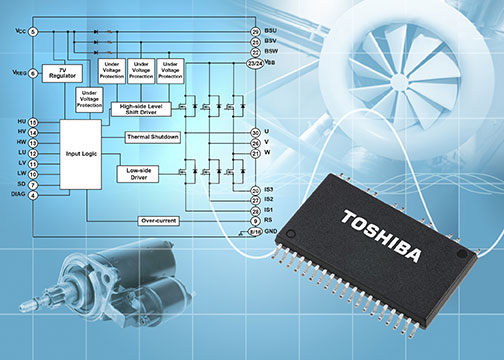- General Top
- SEMICONDUCTOR
- STORAGE
- COMPANY
-
My ToshibaSemicon
- Semiconductor Top
-
ApplicationsAutomotive
Body Electronics
xEV
In-Vehicle Infotainment
Advanced Driver-Assistance Systems (ADAS)
Chassis
IndustrialInfrastructure
BEMS/HEMS
Factory Automation
Commercial Equipment
Consumer/PersonalIoT Equipment
Healthcare
Wearable Device
Mobile
Computer Peripherals
-
ProductsAutomotive Devices
Discrete Semiconductor
Diodes
Transistors
Logic ICs
Analog Devices
Digital Devices
Wireless Devices
※
: Products list (parametric search)
Power SemiconductorsSiC Power Devices
※
: Products list (parametric search)
Isolators/Solid State RelaysPhotocouplers
Digital Isolators
Solid State Relays
Fiber Optic Transmitting Modules
※
: Products list (parametric search)
MOSFETsIGBTs/IEGTsBipolar Transistors※
: Products list (parametric search)
Diodes※
: Products list (parametric search)
MicrocontrollersMotor Driver ICsIntelligent Power ICs※
: Products list (parametric search)
Power Management ICsLinear ICs※
: Products list (parametric search)
General Purpose Logic ICsLinear Image SensorsOther Product ICsOther Product ICs
※
: Products list (parametric search)
-
Design & Development
Design & Development
Innovation Centre
At the Toshiba Innovation Centre we constantly strive to inspire you with our technologies and solutions. Discover how to place us at the heart of your innovations.
-
Knowledge
Knowledge
Highlighted Topics
Further Materials
Other
- Where To Buy
- Part Number & Keyword Search
- Cross Reference Search
- Parametric Search
- Stock Check & Purchase
This webpage doesn't work with Internet Explorer. Please use the latest version of Google Chrome, Microsoft Edge, Mozilla Firefox or Safari.
require 3 characters or more. Search for multiple part numbers fromhere.
The information presented in this cross reference is based on TOSHIBA's selection criteria and should be treated as a suggestion only. Please carefully review the latest versions of all relevant information on the TOSHIBA products, including without limitation data sheets and validate all operating parameters of the TOSHIBA products to ensure that the suggested TOSHIBA products are truly compatible with your design and application.Please note that this cross reference is based on TOSHIBA's estimate of compatibility with other manufacturers' products, based on other manufacturers' published data, at the time the data was collected.TOSHIBA is not responsible for any incorrect or incomplete information. Information is subject to change at any time without notice.
require 3 characters or more.
HV-IPDs Will Play Integral Role in Driving Further Energy Improvements in Domestic Appliances

Consumer attitudes are changing and the energy ratings of domestic appliances are becoming an increasingly important aspect of modern purchasing decisions - whereas previously it would have come a long way down the list (somewhere below, features, price, aesthetics, etc.). For such items to attain high scores in relation to their energy rating, variable speed operation is necessary (in contrast to the less sophisticated 'all or nothing' approach of the past). This allows great efficiency levels to be realised, with a number of different benefits subsequently being derived.
Firstly by drawing less electricity, the energy that needs to be generated to run them can be reduced - leading to less impact on the environment (in terms of lower CO2 emissions and a smaller quantity of fossils fuel reserves being used up in the process). Then there are the reduced utility bills to take into consideration. Reliability is also improved, resulting in longer working lifespans. Finally, variable speed appliances offer quieter running, which is a very attractive trait for the majority of consumers.
Manufacturers of refrigerators, washing machines, dish washers and air conditioning units are all seeing the value of incorporating energy-saving variable speed motors into their products. Through the specifying of simple brush-less DC (BLDC) motors it has been possible to mitigate a reasonable proportion of the extra costs associated with developing/producing variable speed drives (which are obviously not as straight forward as fixed-speed drives they are replacing). Permanent magnet synchronous motors (PMSM) controlled using sinusoidal waveforms that simple BLDCs require, seem destined to be the way forward - satisfying market demands for still further improvements. The latest generation of high voltage intelligent power devices (HV-IPD) present engineers with heightened levels of flexibility when looking to implement synchronous motor control systems.
To learn about the progress Toshiba has made in developing HV-IPDs (based on advanced semiconductor process technologies) for sine-wave control, you can download its new white paper on the subject. Just go to:

